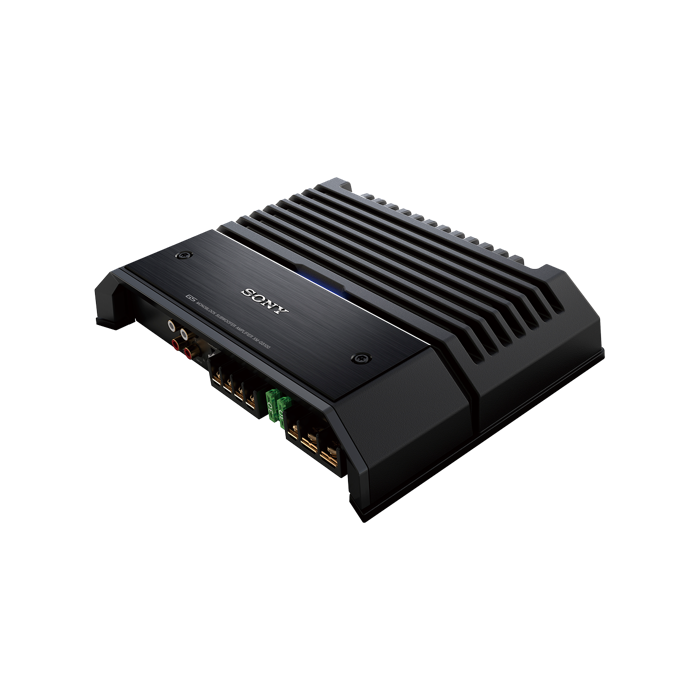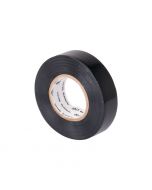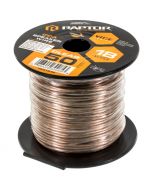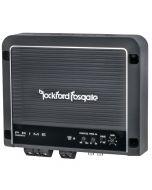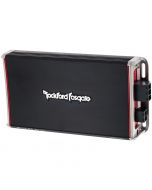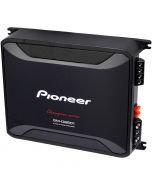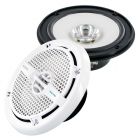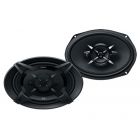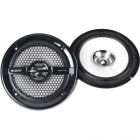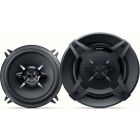We use cookies to make your experience better. To comply with the new e-Privacy directive, we need to ask for your consent to set the cookies. Learn more.
Sony XM-GS100 600 Watt Class D 1-Channel Amplifier
- 700 Watts Max Power
- 1-Channel Amplifier
- Super compact design
- Pulse Width Modulated MOSFET Power supply
- Class D Design Offers Efficiency and High-Quality Sound
- Speaker level inputs with auto turn on
Sony XM-GS100 600 Watt Class D 1-Channel Amplifier
- Features:
- 600 Watts Max Power
- Pulse Width Modulated MOSFET Power supply
- Compact Design for Versatile Installation Options without compromising sound quality
- Class-D design for excellent sound quality and excellent efficiency
- CEA-2006 Compliant amplifier for true power output
- 3-Way Protection circuit senses internal temperature and automatically lowers input level to prevent heat damage. Short circuit protection prevent damage when speaker leads are shorted. Overload protection prevent damage from low impedance or blown woofers.
- Removable top cover to reveal all controls
- Variable Low Pass filters allow you to adjust the playback frequencies from 50Hz to 300Hz at 12dB per octave
- Speaker level inputs allow you to connect this amplifier stereo system that do not have RCA outputs. The is very typical for OEM head-units and you can now avoid adding separate line level converters.
- Remote turn on by auto signal sense, so you do not need to run a remote turn on lead with OEM head-units
- 2 channel RCA inputs accepts up to 6 volt input signals
- 2 channel RCA outputs for easy daisy chaining
- 2 channel speaker level inputs accepts up to 12 volt input signals
- Bass boost controls: 0-10dB at 40Hz
- Variable subsonic filters: 0-12dB at 6Hz - 70 Hz
- Gold plated terminals for all connections
- Frequency Response: 10Hz to 300Hz
- Total Harmonic Distortion (4 Ω): < 0.1% (1kHz)
- Signal-to-Noise Ratio (IHF-A Weighted, at 1 kHz): >65dB
- Dimensions: 10-3/4" (W) x 2-1/8" (H) x 8" (D)
RMS Power Rating:
- 4 ohms: 330 watts x 1 channel
- 2 ohms: 600 watts x 1 channel1
Maximum Dynamic Power Rating:
- 4 ohms: 600 watts x 1 channel
- 2 ohms: 1100 watts x 1 channel
| Manufacturer | Sony |
|---|---|
| Part Number | XM-GS100 |
| Amplifier Topology Class | Class D |
| Number of Channels | 1 Channel |
| Total RMS Power at 1 ohm | 0.00 |
| Total RMS Power at 2 ohm | 600.00 |
| Total RMS Power at 4 ohm | 330.00 |
| Total Peak Power Output | 600.00 (Watts) |
| Amplifier Bridging | Not Bridgable |
| Minimum Impedance in Un-Bridged Mode | 2 ohm |
| Strappable Amplifier | No |
| RCA Pre-amp Audio inputs | 1 Pair |
| RCA Pre-amp Audio outputs | 1 Pair |
| Preamp voltage | 6 volts |
| Speaker level inputs | Yes |
| Gain Control | Yes |
| Bass Knob / Remote Gain | No |
| Built in Crossover | Low-pass |
| Cooling Fan | No |
| Color | Black |
| Warranty | 1 Year |
| Recommended Power Wire Gauge | 8 Gauge |
| CEA2006 Compliant | No |
| UPC Code | 027242823297 |
| Return period | 30 days |
| Exchange period | 30 days |
Car amplifier installation
We show you the complete process of installing a Pioneer Double DIN car stereo in a Chevy truck. The in-depth video shows the installation of the interface, and steering wheel control.
Amplifier Installation basics
Let's start with the basics of adding or installing a car amplifier. First you will need to plan your installation and power wiring, this usually is the most difficult part of the installation for most.
How to choose the proper wire size explained
What size power wire do I need for my amplifier? Well, that depends on the length of the wire and the power consumption of the amplifier. We walk you through how to choose the right gauge wire and wire material depending on your amplifier installation requirements.
How to wire speakers and subwoofers to your new amplifier
In our third video we demonstrate the various ways you can wire speakers and amplifiers to all types of amplifiers. There different ways to do this depending on the type of amplifier you choose to purchase.
What is gain? How do I set it properly?
In our fourth video we demonstrate how to set the gains on your amplifier to prevent damage to your speakers, subwoofers and even possibly your new amplifier. Using a portable oscilloscope we show you how to set your gains.

